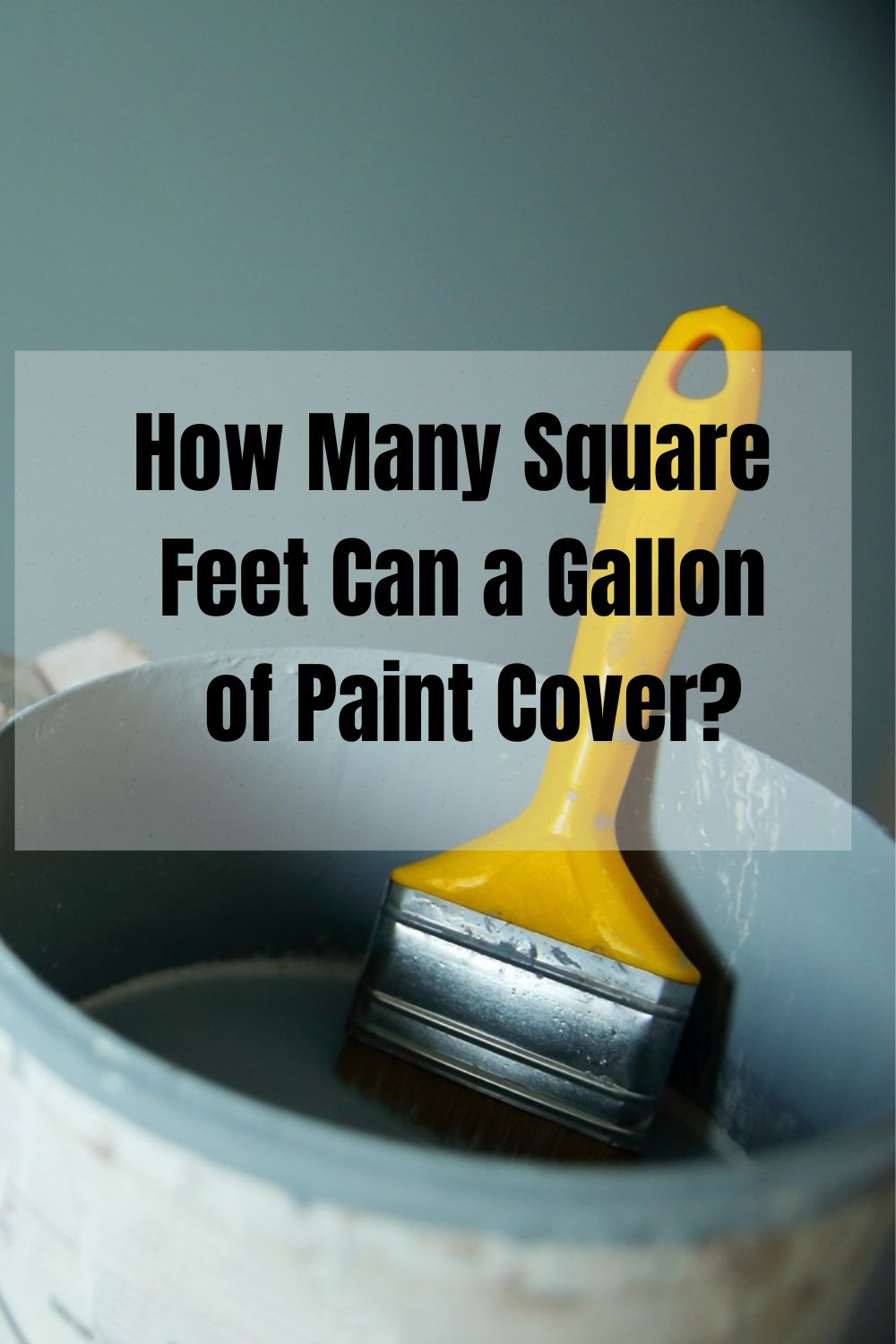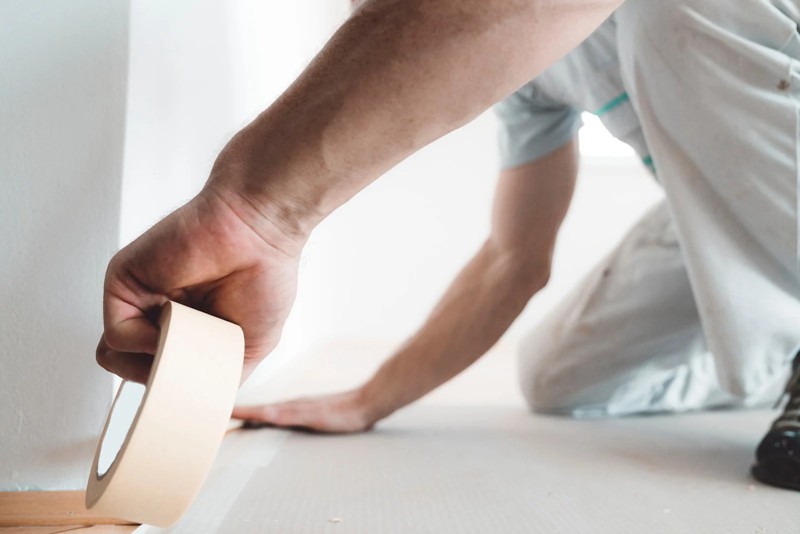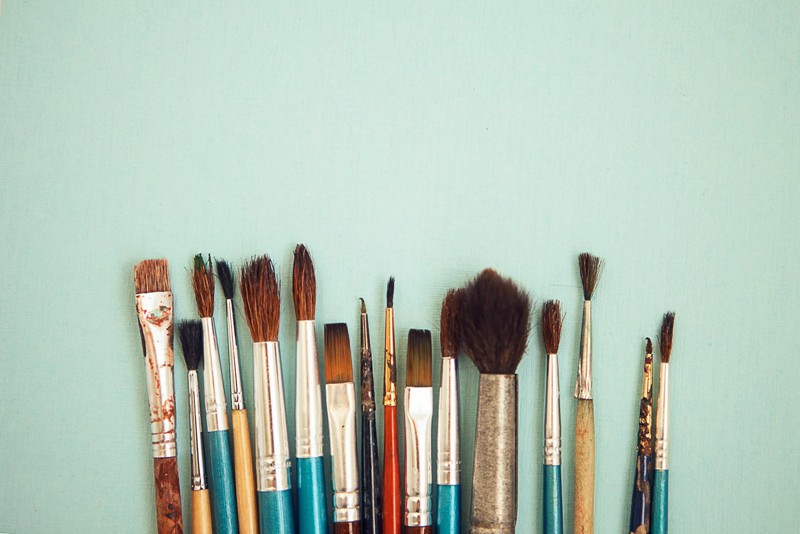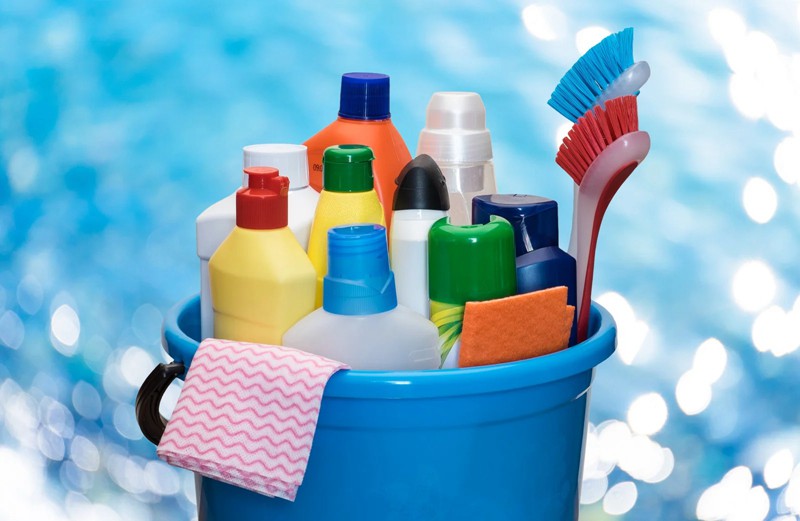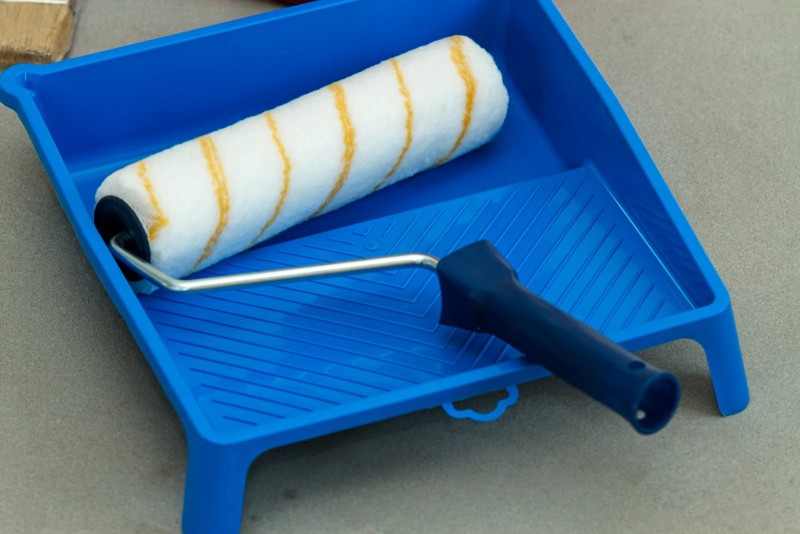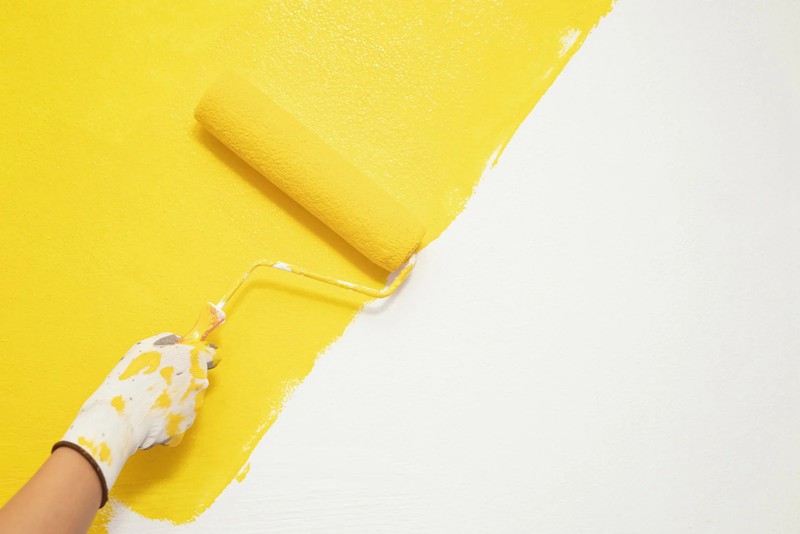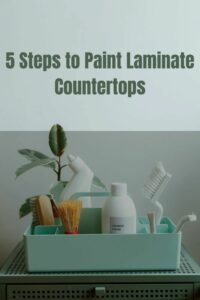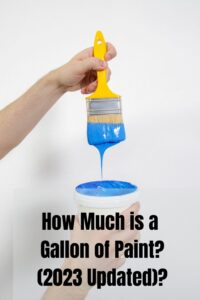Painting can be a tiresome but satisfying job. Whether you’re an amateur doing a quick do-it-yourself paint job in your family home or a professional painter recapping the basics, you’ll require particular tools and facts about painting to get you started and keep you from getting frustrated halfway.
After choosing a color that fits, you can decide how much paint to buy. The goal is to have just enough paint so that your space is perfectly covered and coated. Keep reading to see the right amount of paint for coverage and other helpful tips.
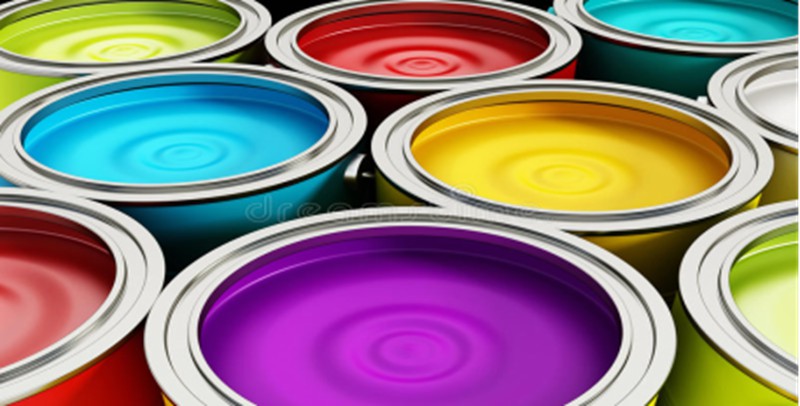
Table of Contents
All You Need to Know About Paint Coverage
There must be more than just the right paint color to get a clean, consistent finish. Getting a good measurement of all surfaces involved, correctly applying the primer, and accurately calculating your figures will guarantee a rewarding paint finish. Let’s dive into some of these critical factors.
Effects of Primer on Painting Surfaces
When considering proper coverage in painting, there’s an essential material called the primer. The primer is an ingenious invention that has changed the painting world (one of the best things that happened to paint in my book).
Usually, when painting, several factors have to be considered. We will still look into a few of these factors as you read. However, one of the jobs of the primer is to prevent you from using too much paint. It acts as an undercoat for the primary finishing paint.
As an undercoat, it allows the paint to stick better to the wall or other surfaces. The primer also fills up any holes and reduces the porosity of the surface and thereby preventing mold growth.
It is especially effective for concrete and wood surfaces. It’s best to add the cost of a primer to your list. One gallon of primer can cover approximately 225-275 square feet of a surface.
Average Paint-to-Square Feet Ratio
The basic information on paint coverage for the finishing paint is that a gallon of paint will cover about 400 square feet of a room. However, this information does not include the trim, ceiling, windows, door openings, and other attachments.
Also, since you’ll need at least two coats of paint for the best coverage, you’ll need to double the amount of color you buy after measurement. We will discuss all these in more detail below.
The average gallon of wall paint will cover approximately 375-425 square feet, while the average gallon of trim paint will cover around 375-425 square feet. On the other hand, you can use one gallon of ceiling paint to cover approximately 350-400 square feet.
However, when considering these estimates, we also have to consider the condition of the painted surface. Factors like texture, color change, and porosity can affect the number of coats used. These factors will eventually tell on the amount of paint used.
How to Measure Surfaces for Painting
To calculate these estimates for their specific space- living room, bathroom, kitchen, or a much larger room- some people prefer to get a professional to calculate it or an online calculator rather than do it incorrectly. However, it’s pretty easy to do the calculations yourself, and online calculators may not account for nuances.
The first thing to do is calculate the room’s square footage. You should carefully measure every space you will paint as each space will not necessarily have the exact measurements- no, you can’t assume the sizes with just your eyes. Use actual tape.
To do this, measure the height and width of each wall and multiply them. This part is easy. For example, if the height is 10ft and the width is 15ft, your square footage is 150ft.
While measuring, do not include the trims like the crown molding and baseboards, except if you intend to paint everything the same color. People usually tape those parts when painting to allow for another color. To get started, you’ll need to multiply the width and height of each wall in your space.
After doing all that, measure the square footage of windows, doors, and other openings, as you’ll be excluding these from the general measurements. If the 150 square feet wall has a two by six window, which is 12 square feet, you should subtract 12 square feet from 150 square feet. That leaves 138 square feet. Do the same for doors as well.
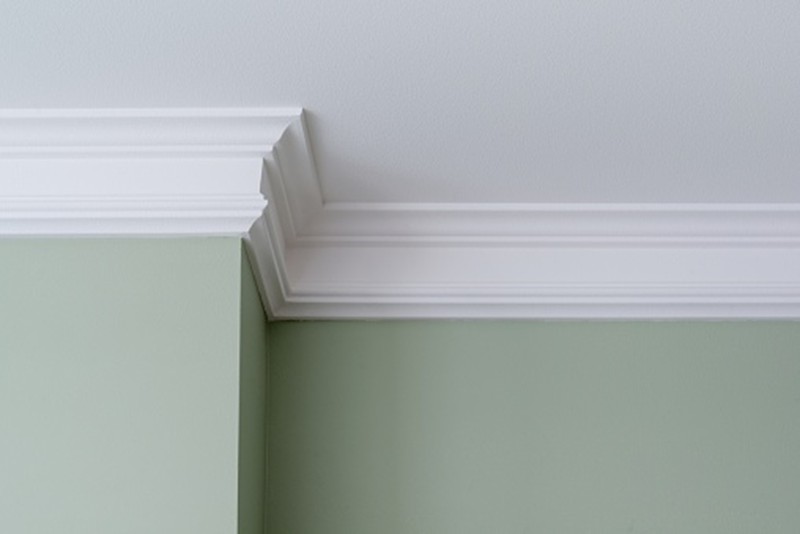
Finally, measure the ceilings and trims, length by width, to get your square footage and paint them separately. The double coating is one major thing that affects the amount of paint people use, leading to them returning to the store.
For a professional look, try using two coats of paint. These two coats imply double the figures. Then add more paint, just in case.
You should account for the extra paint before going to the store. This prevents searching for that exact shade of paint (why are there so many shades of white?!)
Factors that Determine the Amount of Paint Used
As mentioned above, it’s not just the paint color or the room size that can determine the number of paint gallons to buy. Some other factors can suck up your paint or leave you with too much paint.
● Condition of the Wall
Different conditions of your wall require other methods to ensure both a good finish and a reasonable amount of paint usage.
How your current wall looks, either fading paint, bubbling or peeling paint, or even an unpainted wall, will determine the prep work you need to put in and if you’ll do a complete painting overhaul or just touchups. Some conditions require primers, and some require mortar to fill holes.
● The Texture of the Wall
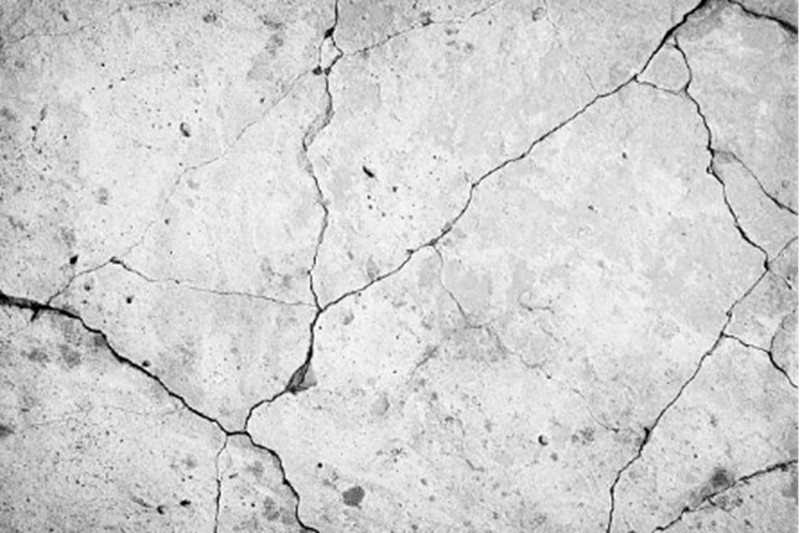
The wall’s texture can be smooth or orange peel, stucco, comb, skip-trowel textured walls, or other surfaces. Even cracks on the wall and additional holes can add texture to an otherwise smooth wall and will need some work before painting.
A textured wall allows for more surface area for the paint to touch. Therefore, more paint will be in use. To account for textured walls, you can calculate 20 percent of the total paint and add it to the total amount of paint you buy.
Another painting tip for textured walls is to use a high nap or high pile roller to get a better finish and maximize your paint. Also, you can’t go wrong with a prime for textured walls. A coat or two will reduce the paint you use on the surface.
● Porosity
Porosity, when it comes to wall painting, implies the ability of the wall to soak up extra paint. It means some holes allow for the passing through of liquid on that surface.
An example of a porous surface is fresh drywall. Fresh drywall will require more primer or extra coats of paint to keep it from fading and lacking coverage.
● Quality of the Paint Used
Just like most things in life, it’s quality over quantity. Buying quality paint ensures you have enough coverage because the thickness covers that. This factor reduces the number of coats you might have had to apply.
However, this is the least of the functions of good quality paint. You can rest assured that it is a more sustainable choice whether you use it internally or externally. Unlike poor-quality paint, which may not take long to fade, quality paint lasts.
The question is, how can you tell if the paint is of good quality? Well, quality paint contains quality binders. The better the binder, the better the paint because it can stick better to the surface and doesn’t crack as much. Likewise, you can tell the paint quality from the number of pigments and several additives.
Furthermore, the time between applying the first coat of paint and the second one goes a long way in determining its longevity.
After every coat of paint, leave it for about 4 to 6 hours. For water-based paint, 3 hours is good enough. Matte paint requires approximately 1-2 hours, while for oil-based paints, you’ll have to wait 24 hours before applying the second coat.
● Previous Paint Color Used
Yes, repainting a room from dark to light colors requires more paint. However, you can use a primer to avoid buying too much paint for extra coats. How can a primer help? You can use a primer by applying a lighter primer to the surface first.
Painters typically apply two coats of primer to a surface for a strong finish. A benefit of this is you have been able to cut down on the quantity of paint to completely cover up the darker shade previously used on the surface.
Painting Tools for Easy Work
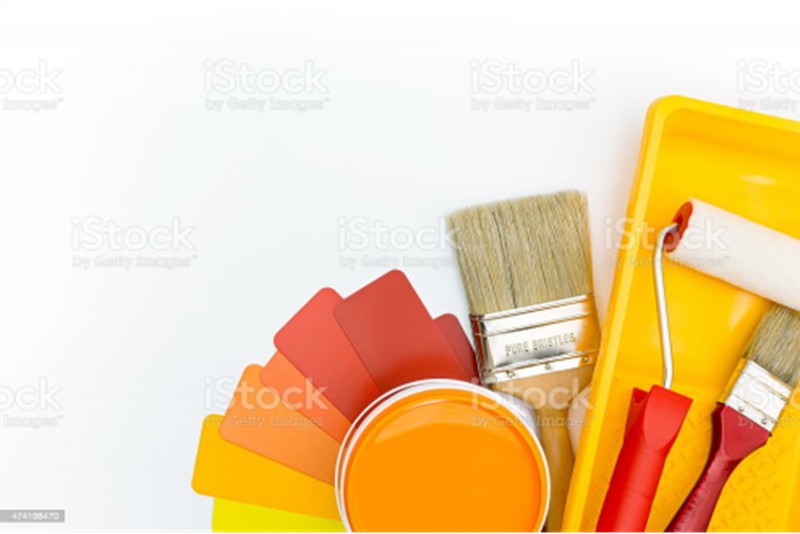
Among the factors that do a good paint job, the tools employed also play a vital role. Although you won’t break the bank for your devices, you’ll need good tools to accomplish the work.
However, you can do an excellent job without using too many tools. The basics are just fine. Here is a breakdown of some favorites:
Painter’s Tape
Painter’s tape is an essential tool because, most times, you can’t paint over everything in a space. Painter’s tape ensures that fixtures like light switches and sockets are adequately covered.
The tape is also used as a dividing line between one color and another to prevent streaks and give a clean finish.
Paint Brushes
What is painting without a paintbrush? If you are doing the job as an amateur, probably painting a child’s room, you might not need to buy ‘the best of the best brush for painting pros.’
A good 2 ½ angle brush will do just fine. You can use brushes to paint small portions like trim and cutting-ins, as more significant parts will take too much time and strain the arm.
Wall Cleaner
A wall cleaner should have been the first tool on the list. A wall cleaner does just what the name says; it cleans the walls—cleaning the wall before painting prevents air bubbles and helps the paint to adhere to the surface.
Plastic Roller Tray
Depending on how large the surface you’re painting, you might need to pour your paint unto a plastic roller tray rather than a bucket. Plastic is preferable because it’ll be easier to wash off the paint and relieve stress.
Rollers
Rollers are next to brushes in the painting hierarchy; what would we do without them? A roller is an excellent tool for applying paint. You should ensure it is sturdy before buying a size of your choice.
Frequently Asked Questions
1. Do Primers Come in Different Shades?
Yes, they do, and the color of your primer will affect the amount of paint you can use. If you want to finish with a lighter color, it’s best to use a lighter shade of primer and the same for darker shades of primer and paint to prevent numerous coats.
2. How Do I Clean Paint from My Tiles?
You can use an alcoholic solvent like paint thinner to remove extra paint on your tiles or floor. Or you can manually scrape paint off using a scraping tool. However, to prevent paint from staining your surfaces, consider lining them with old newspapers.
3. How Many Square Feet Can a Quart of Paint Cover?
A quart of paint covers about 100 square feet. Four quarts of paint make up one gallon of paint, but one gallon will give you more value for your money same price.
Final Words
Painting is fun when the entire process goes smoothly. Calculating the gallon of paint to cover your space will be a breeze when you can accurately measure your room.
As you can see, there’s no need for external help except if you’re bad at maths and can’t be bothered. Also, taking note of all the other factors mentioned above will give you a smooth finish and that satisfying ‘aahh’ response, and what is a better reward than that? For further questions and inquiries, please comment in the comment section. Happy painting!

